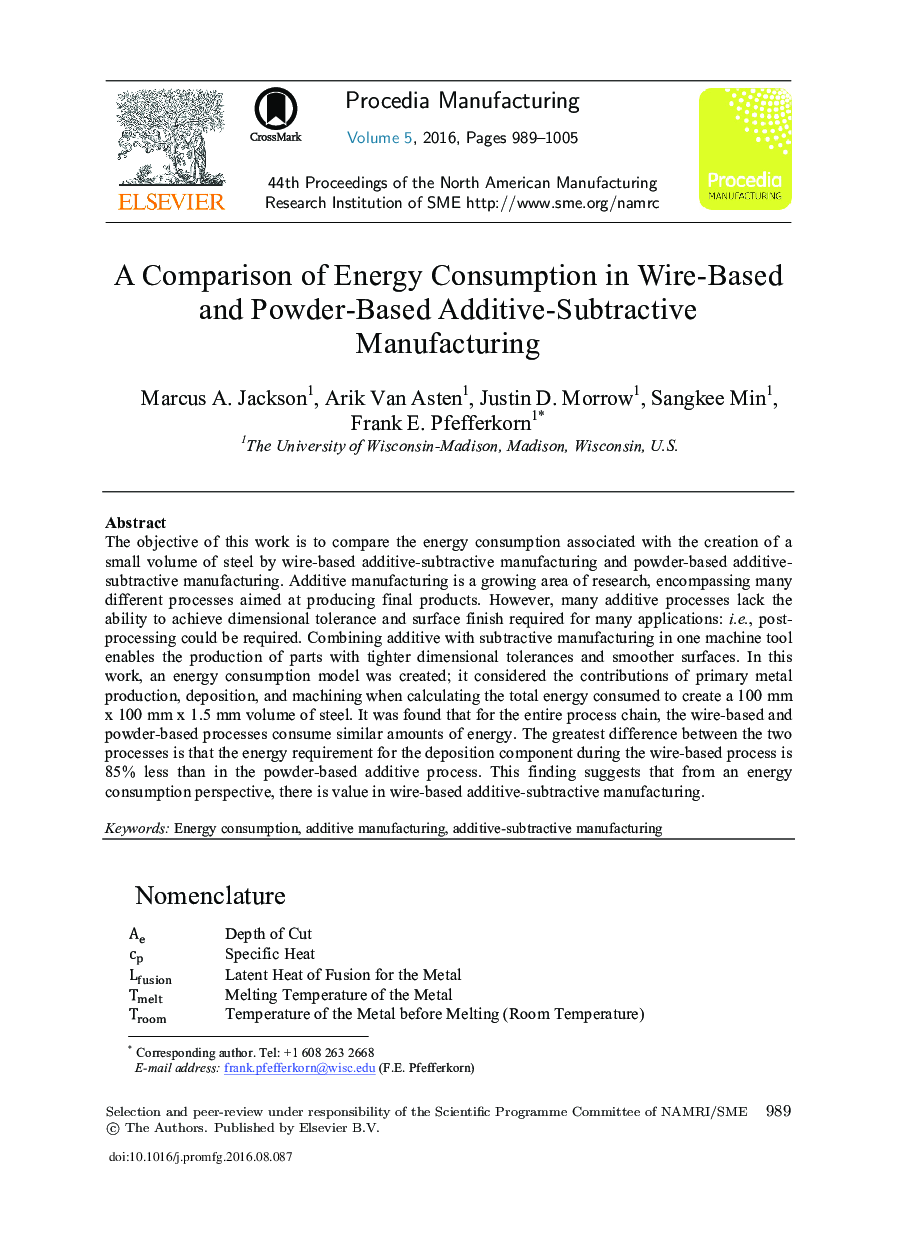| Article ID | Journal | Published Year | Pages | File Type |
|---|---|---|---|---|
| 5129079 | Procedia Manufacturing | 2016 | 17 Pages |
The objective of this work is to compare the energy consumption associated with the creation of a small volume of steel by wire-based additive-subtractive manufacturing and powder-based additive-subtractive manufacturing. Additive manufacturing is a growing area of research, encompassing many different processes aimed at producing final products. However, many additive processes lack the ability to achieve dimensional tolerance and surface finish required for many applications: i.e., post-processing could be required. Combining additive with subtractive manufacturing in one machine tool enables the production of parts with tighter dimensional tolerances and smoother surfaces. In this work, an energy consumption model was created; it considered the contributions of primary metal production, deposition, and machining when calculating the total energy consumed to create a 100mm x 100mm x 1.5mm volume of steel. It was found that for the entire process chain, the wire-based and powder-based processes consume similar amounts of energy. The greatest difference between the two processes is that the energy requirement for the deposition component during the wire-based process is 85% less than in the powder-based additive process. This finding suggests that from an energy consumption perspective, there is value in wire-based additive-subtractive manufacturing.
